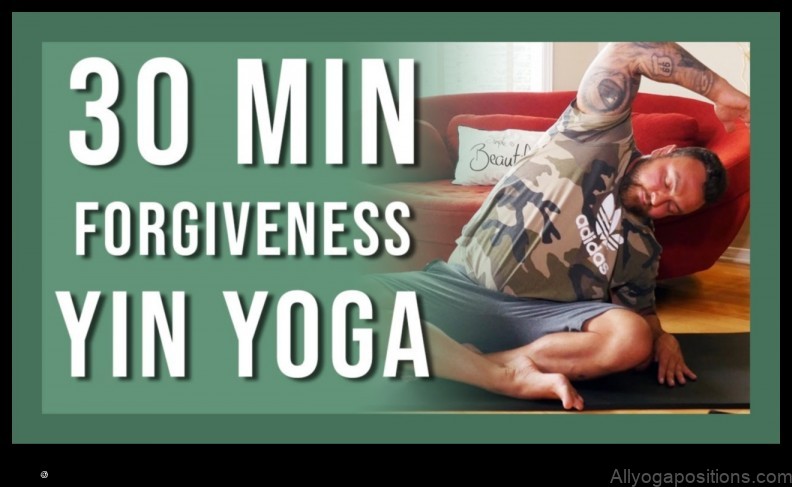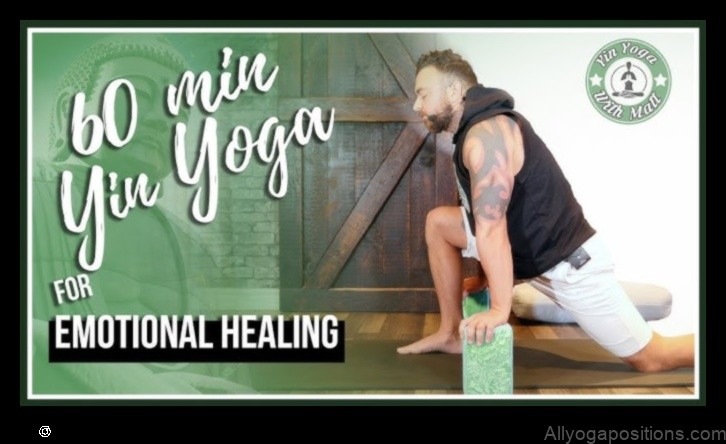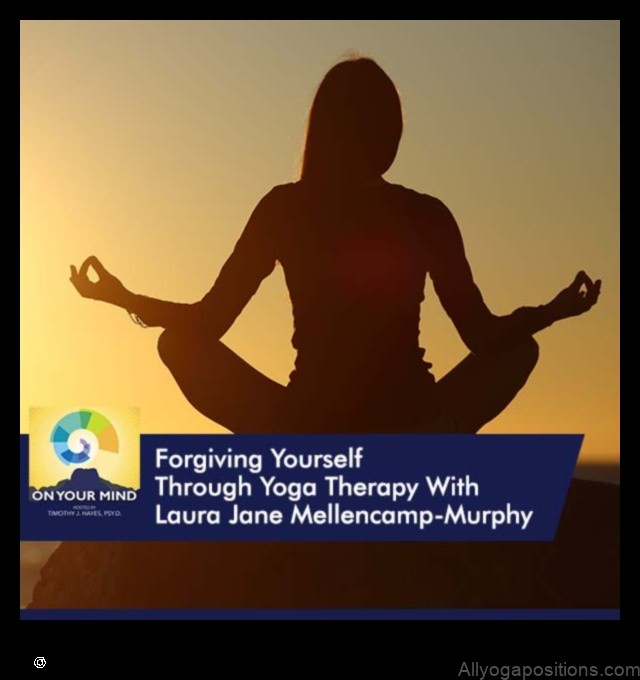
Introduction
Yoga is a mind and body practice that has been shown to have many benefits for physical and mental health. In recent years, yoga has been increasingly used as a complementary therapy for emotional healing and forgiveness.
This article will explore how yoga can help with emotional healing and forgiveness. We will discuss the benefits of yoga for emotional healing, specific yoga poses that can help with forgiveness, and tips for practicing yoga for emotional healing and forgiveness.
What is Yoga?
Yoga is a mind and body practice that originated in ancient India. Yoga combines physical postures, breathing exercises, and meditation.
Yoga is often practiced in a class setting, but it can also be practiced at home. There are many different types of yoga, each with its own focus and benefits.
Some of the benefits of yoga include:
- Reduced stress and anxiety
- Improved flexibility and strength
- Increased energy and vitality
- Improved sleep
- Enhanced mental clarity
- Reduced pain
- Improved balance
How does Yoga help with Emotional Healing and Forgiveness?
Yoga can help with emotional healing and forgiveness in a number of ways.
First, yoga can help to reduce stress and anxiety. When we are stressed or anxious, our bodies produce cortisol, a stress hormone that can have negative effects on our physical and mental health. Yoga can help to reduce cortisol levels, which can lead to improved mood and decreased stress levels.
Second, yoga can help to improve our flexibility and strength. When we are physically strong and flexible, we feel more confident and capable. This can help us to feel more in control of our lives and more able to cope with difficult emotions.
Third, yoga can help to improve our focus and concentration. When we are able to focus and concentrate, we are better able to process our emotions and make healthy choices.
Fourth, yoga can help to connect us to our bodies and our breath. When we are connected to our bodies and our breath, we are better able to listen to our inner wisdom and intuition. This can help us to make healthier choices and to forgive ourselves and others.
Finally, yoga can help to create a sense of community and support. When we practice yoga with others, we can create a sense of connection and support. This can help us to feel less alone and more able to cope with difficult emotions.
Yoga Poses for Emotional Healing and Forgiveness
There are many different yoga poses that can help with emotional healing and forgiveness. Some of the most beneficial poses include:
- Child’s pose
- Reclining bound angle pose
- Plow pose
- Bridge pose
- Supta virasana (reclining hero pose)
- Savasana (corpse pose)
These poses can help to relax the body and mind, release tension, and promote forgiveness.
Benefits of Yoga for Emotional Healing and Forgiveness
Yoga can offer a number of benefits for emotional healing and forgiveness, including:
- Reduced stress and anxiety
- Improved flexibility and strength
- Increased energy and vitality
- Improved sleep
- Enhanced mental clarity
- Reduced pain
- Improved balance
- Increased self-awareness
- Improved relationships
- Forgiveness
| Topic | Features |
|---|---|
| Forgiveness Practices | – Letting go of resentment and anger – Allowing yourself to feel your emotions – Developing compassion for yourself and others – Forgiveness meditation |
| Yoga for Emotional Healing | – Reduces stress and anxiety – Improves mood and self-esteem – Promotes relaxation and mindfulness – Helps to connect with your body and mind |
| Emotional Healing | – Healing from past trauma or grief – Coping with difficult emotions – Developing healthy coping mechanisms – Improving your overall well-being |
| Yoga for Stress Relief | – Reduces muscle tension – Improves breathing and circulation – Promotes relaxation and calmness – Helps to manage stress and anxiety |
| Yoga for Anxiety | – Reduces anxiety symptoms – Improves mood and self-esteem – Promotes relaxation and mindfulness – Helps to manage anxiety and panic attacks |

II. What is Yoga?
Yoga is a mind-body practice that originated in ancient India. It involves a series of poses, breathing exercises, and meditation. Yoga can help to improve physical and mental health, and it can also be used for emotional healing and forgiveness.
III. How does Yoga help with Emotional Healing and Forgiveness?
Yoga can help with emotional healing and forgiveness in a number of ways.
First, yoga can help to reduce stress and anxiety. When we are stressed or anxious, our bodies are in a state of “fight or flight” mode. This is a natural response to danger, but it can also make it difficult to think clearly and make healthy decisions. Yoga can help to calm the nervous system and bring us back to a state of balance.
Second, yoga can help to improve our self-awareness. When we practice yoga, we pay attention to our bodies and our breath. This can help us to become more aware of our thoughts and emotions. As we become more aware of our thoughts and emotions, we are better able to understand them and to make choices that are in our best interests.
Third, yoga can help to foster compassion and forgiveness. When we practice yoga, we learn to be kind to ourselves and to others. We learn to accept ourselves for who we are, and we learn to forgive ourselves for our mistakes. This compassion and forgiveness can help us to heal from emotional pain and to move on with our lives.
Yoga is not a quick fix for emotional healing and forgiveness. It is a practice that takes time and dedication. However, if you are willing to put in the work, yoga can be a powerful tool for healing and transformation.

IV. Yoga Poses for Emotional Healing and Forgiveness
There are many yoga poses that can help with emotional healing and forgiveness. These poses can help to release tension, improve circulation, and promote relaxation. They can also help to clear the mind and allow for deeper introspection.
Some of the most beneficial yoga poses for emotional healing and forgiveness include:
- Child’s pose
- Shavasana
- Supported bridge pose
- Reclining hero pose
- Plow pose
- Upward-facing dog
- Cobra pose
- Warrior II pose
- Half moon pose
These poses can be practiced individually or in combination with each other. It is important to listen to your body and modify the poses as needed. If you are feeling pain or discomfort, stop the pose and try a different one.
Yoga is a safe and effective way to promote emotional healing and forgiveness. It can help to relieve stress, improve mood, and increase self-awareness. If you are struggling with emotional pain or trauma, yoga can be a helpful tool in your healing journey.

V. Benefits of Yoga for Emotional Healing and Forgiveness
Yoga can help with emotional healing and forgiveness in a number of ways.
It can help you to relax and reduce stress. When you practice yoga, you focus on your breath and your body movements. This can help to calm your mind and body, and reduce stress levels.
It can help you to connect with your inner self. Yoga can help you to become more aware of your thoughts and feelings. This can help you to understand yourself better, and to make choices that are in your best interests.
It can help you to develop compassion and forgiveness. Yoga can help you to see the world from a different perspective. This can make it easier to understand why others have done the things they have done, and to forgive them.
It can help you to build strength and resilience. Yoga can help you to build strength and resilience in both your body and your mind. This can help you to cope with difficult emotions and situations, and to come out stronger on the other side.
VI. Tips for Practicing Yoga for Emotional Healing and Forgiveness
Here are some tips for practicing yoga for emotional healing and forgiveness:
- Start slowly and gradually increase the intensity of your practice as you feel comfortable.
- Listen to your body and avoid pushing yourself too hard.
- Be patient with yourself and don’t expect to instantly heal all of your emotional pain.
- Find a supportive yoga community where you can feel safe to share your experiences.
- Practice yoga regularly to reap the full benefits.
VII. Common Myths about Yoga for Emotional Healing and Forgiveness
There are many myths about yoga for emotional healing and forgiveness. Here are some of the most common:
- You have to be flexible to do yoga.
- Yoga is only for women.
- Yoga is a religion.
- Yoga is too expensive.
- Yoga is not for people who are injured or have health problems.
These myths are all false. Yoga is for everyone, regardless of age, gender, flexibility, or religious beliefs. It is also not expensive, and there are many ways to practice yoga that are accessible to people with injuries or health problems.
If you are interested in learning more about yoga for emotional healing and forgiveness, there are many resources available to you. You can find classes at your local yoga studio, or you can learn from books, DVDs, or online resources.
Yoga can be a powerful tool for healing emotional pain and learning to forgive others. If you are struggling with emotional trauma or grief, I encourage you to explore the possibility of adding yoga to your healing journey.
Conclusion
Yoga is a powerful tool for emotional healing and forgiveness. It can help you to connect with your body, mind, and spirit, and to release the emotions that are holding you back. When you practice yoga, you are creating a space for yourself to let go of your pain and to forgive others. This can lead to a deeper sense of peace and well-being.
If you are interested in using yoga for emotional healing and forgiveness, I encourage you to find a qualified yoga teacher who can help you to safely and effectively practice yoga. You can also find many resources online that can teach you about the benefits of yoga for emotional healing and forgiveness.
Yoga is a journey, and there is no one-size-fits-all approach to emotional healing and forgiveness. The most important thing is to find what works for you and to keep practicing. With time and effort, you can achieve a deep sense of peace and well-being.
Q: What is forgiveness?
A: Forgiveness is the process of letting go of anger and resentment towards someone who has wronged you. It is not about condoning their behavior, but it is about choosing to let go of the negative emotions that are holding you back.
Q: Why is forgiveness important for emotional healing?
A: Forgiveness is important for emotional healing because it allows you to let go of the negative emotions that are holding you back. When you hold on to anger and resentment, it can damage your mental and physical health. Forgiveness can help you to move on with your life and create a more positive future.
Q: How can yoga help with forgiveness?
Yoga can help with forgiveness by providing a safe and supportive space to explore your emotions. Yoga can also help you to relax and let go of tension, which can make it easier to forgive.
Q: What are some yoga poses that can help with forgiveness?
Some yoga poses that can help with forgiveness include:
- Child’s pose
- Reclining bound angle pose
- Supported bridge pose
- Supta baddha konasana
- Knee-to-chest pose
Q: What are some tips for practicing yoga for forgiveness?
Some tips for practicing yoga for forgiveness include:
- Start by setting an intention for your practice.
- Be gentle with yourself and don’t push yourself too hard.
- Listen to your body and mind and allow yourself to feel whatever comes up.
- Be patient and allow the process of forgiveness to take time.
Q: What are some common myths about forgiveness?
Some common myths about forgiveness include:
- Forgiveness means condoning someone’s behavior.
- Forgiveness is easy.
- You have to forgive someone in order to move on.
Q: How can I learn more about forgiveness?
There are many resources available to help you learn more about forgiveness. Some helpful resources include:
- Books:
- The Power of Forgiveness: A Guide to Healing Your Heart and Renewing Your Life by Dr. Fred Luskin
- Forgiveness: A New Way of Thinking About Anger, Resentment, and Love by Dr. Robert Enright
- The Forgiveness Project: How Can We Forgive the Unforgivable? by Marina Cantacuzino
- Online resources:
- The Forgiveness Project: https://www.theforgivenessproject.com/
- The Forgiveness Institute: https://www.forgivenessinstitute.org/
- The Center for Forgiveness: https://www.centerforforgiveness.org/
- Classes and workshops:
- Many community centers and yoga studios offer classes and workshops on forgiveness.
X. Resources
* [Forgiveness Practices](https://www.yogajournal.com/practice/forgiveness-practices)
* [Yoga for Emotional Healing](https://www.yogajournal.com/practice/yoga-for-emotional-healing)
* [Emotional Healing](https://www.healthline.com/health/emotional-healing)
* [Yoga for Stress Relief](https://www.healthline.com/health/yoga-for-stress-relief)
* [Yoga for Anxiety](https://www.healthline.com/health/yoga-for-anxiety)
FAQ
Q: What is forgiveness?
A: Forgiveness is the process of letting go of anger and resentment towards someone who has wronged you. It is not about condoning their behavior, but it is about choosing to let go of the negative emotions that are holding you back.
Q: How does yoga help with forgiveness?
A: Yoga can help with forgiveness by providing a physical and mental space to relax and let go of tension. Yoga can also help to cultivate compassion and empathy, which can make it easier to forgive others.
Q: What are some yoga poses that can help with forgiveness?
A: Some yoga poses that can help with forgiveness include:
- Child’s pose
- Reclining bound angle pose
- Supported backbend
- Bridge pose
- Savasana
Table of Contents
Maybe You Like Them Too
- Harmony in Heart Yoga for Emotional Well-being A guide to using yoga to improve your mental health Learn how to reduce stress, anxiety, and depression Find peace and tranquility in your daily life
- Yoga for Emotional Wellness A Pathway to Nurturing the Spirit
- Bend and Stretch with Bow Pose
- Joyful Journeys Yoga for Adventure and PlayA Guide to Mindful Movement and Playful Exploration
- Harmony in Breath Yoga for PranayamaA Guide to Mastering the Mind-Body Connection
